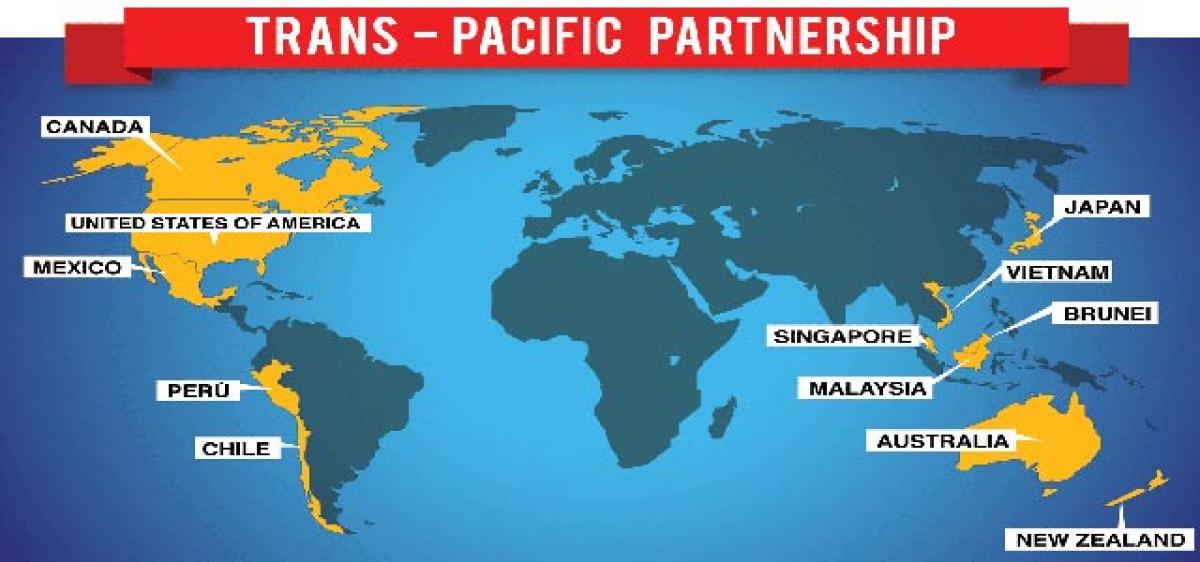Trans-Pacific Partnership

US President-elect Donald Trump said Monday he would move to pull out of the Trans-Pacific Partnership (TPP) trade deal the day he took office, in line with a central campaign pledge.
US President-elect Donald Trump said Monday he would move to pull out of the Trans-Pacific Partnership (TPP) trade deal the day he took office, in line with a central campaign pledge. "Instead, we will negotiate fair, bilateral trade deals that bring jobs and industry back onto American shores," he said.
The TPP is a major trade deal between 12 nations including the US which aims to boost trade among the Pacific Rim. The US, Japan, Malaysia, Vietnam, Singapore, Brunei, Australia, New Zealand, Canada, Mexico, Chile and Peru are all signatories. Once ratified, it is expected to remove tariffs and other trade barriers, and unify regulations on goods and services.
The Republican billionaire's victorious campaign successfully tapped the anger of working-class American voters who feel left behind by years of globalisation, vowing to protect American jobs against cheap labor in countries like China and Mexico. Trade deals such as TPP and the 1993 North American Free Trade Agreement (NAFTA) featured heavily in the brutal White House race and many see Trump's victory as a repudiation of ever-deeper commercial ties.
The president-elect had vowed both to scuttle the TPP – President Barack Obama's signature trade initiative – and renegotiate NAFTA. The TPP a trade agreement among twelve of the Pacific Rim countries notably does not include China. The finalized proposal was signed on 4 February 2016 in Auckland, New Zealand, concluding seven years of negotiations.
It is currently awaiting ratification to enter into force. The 30 chapters of the agreement aim to "promote economic growth; support the creation and retention of jobs; enhance innovation, productivity and competitiveness; raise living standards; reduce poverty in the signatories' countries; and promote transparency, good governance, and enhanced labor and environmental protections."
The TPP contains measures to lower both non-tariff and tariff barriers to trade, and establish an investor-state dispute settlement mechanism. Twelve countries participated in negotiations for the TPP and all 12 signed the TPP on 4 February 2016.[20] The agreement will enter into force after ratification by all signatories, if this occurs within two years. If the agreement is not ratified by all before 4 February 2018, it will enter into force after ratification by at least 6 states which together have a GDP of more than 85% of the GDP of all signatories.










